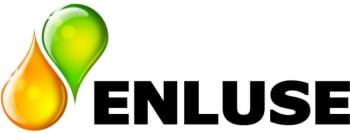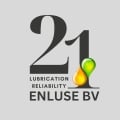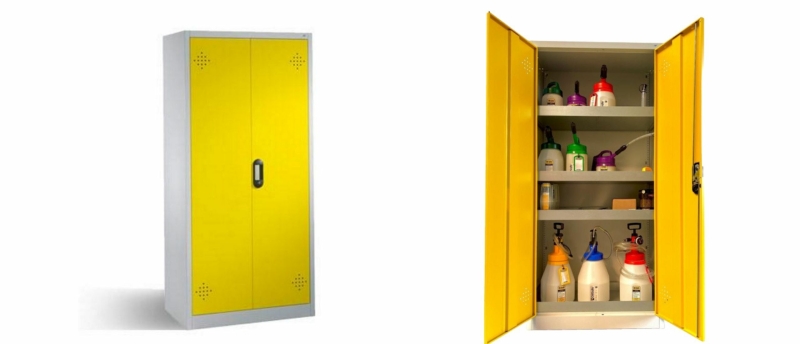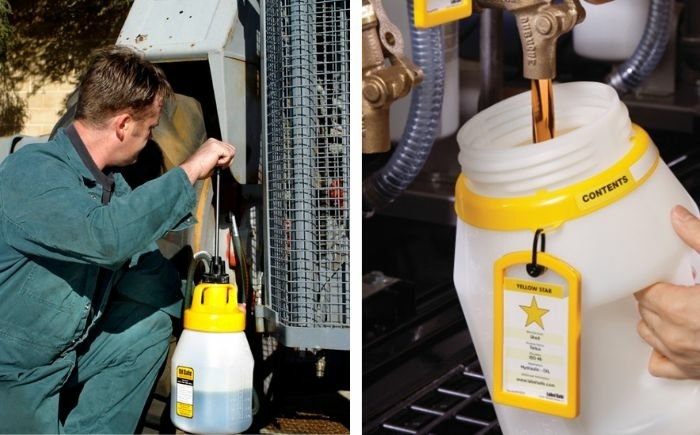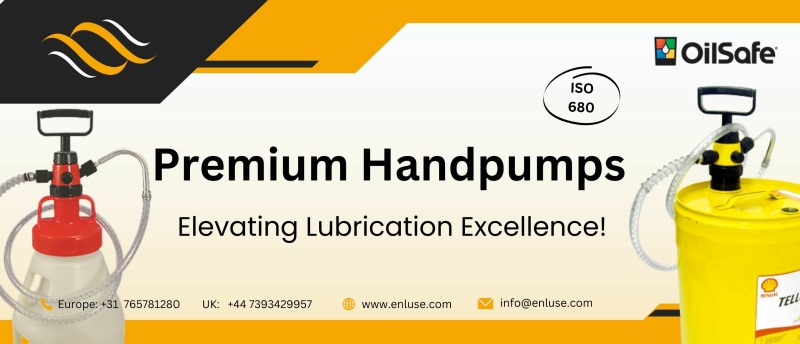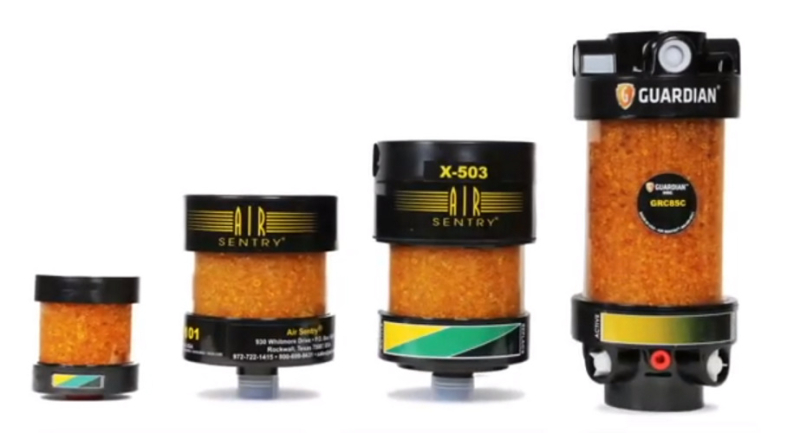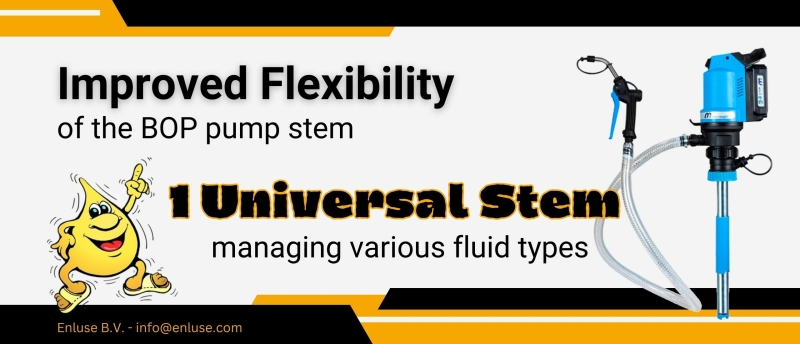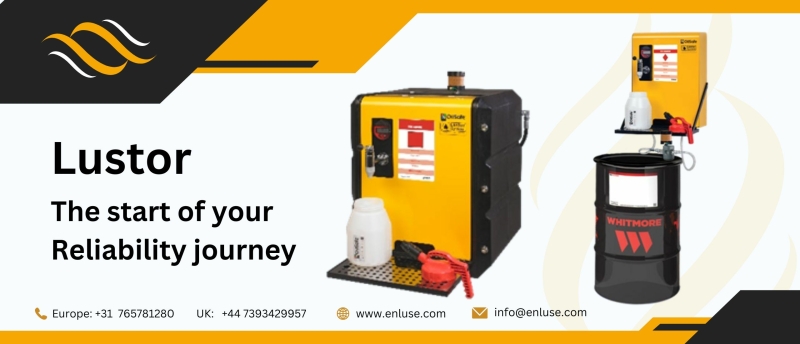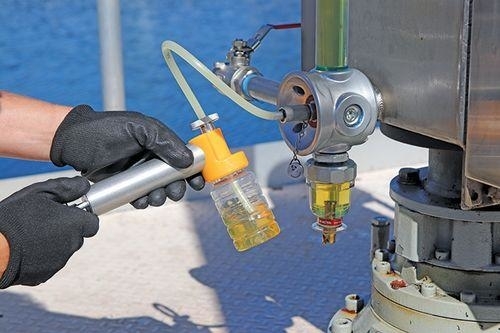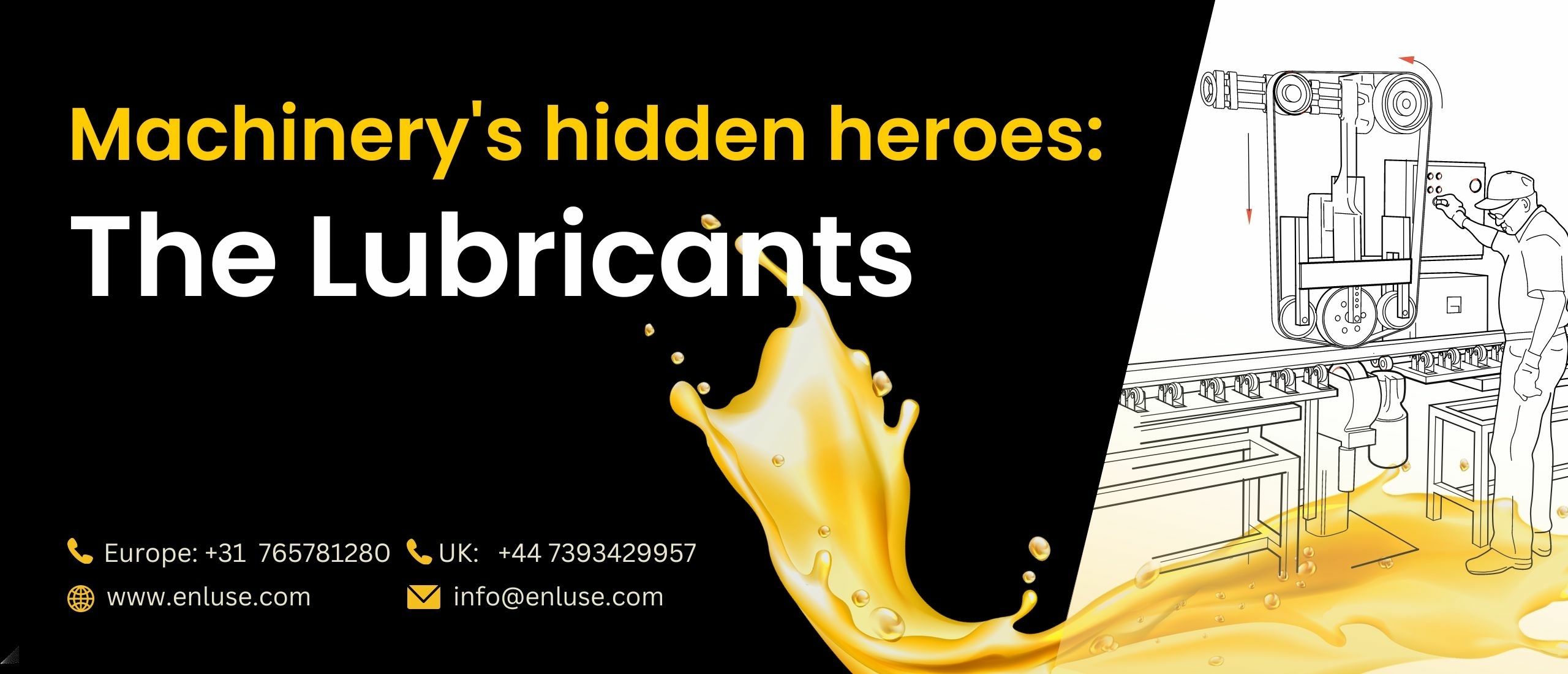
Machinery's hidden heroes – The Lubricants
Welcome aboard the journey into the world of machinery's hidden heroes – the lubricants. Just as clean air invigorates our lungs, maintaining lubricant health and cleanliness breathes life into the intricate mechanisms that power our industrial marvels.
In this blog, we'll delve deep into the art of preserving lubricant purity, uncovering the secrets to unlocking peak performance, extended lifespan, and a symphony of seamless operations.
Picture your machinery as a high-speed race car, and the lubricants as the sleek engine oil that keeps everything running at top speed. Just as a race car needs a well-tuned engine to zoom down the track, your equipment needs pristine lubricants to glide effortlessly and achieve peak performance.

Remember, just like a race car engine, keeping the lubricant healthy and clean is the secret behind the exciting race of your machine's performance and longevity.
Keep those lubricants pristine,
and watch your equipment shine!
How to achieve lubricant health and cleanliness
Maintaining lubricant health and cleanliness is crucial to maximizing performance and extending the lifespan of machinery and equipment. Here are 10 examples of how to achieve lubricant health and cleanliness:
- Regular Oil Analysis: Implement a routine oil analysis program to monitor lubricant condition, identify contaminants, and detect potential issues early.
- Proper Storage: Store lubricants in clean, dry, and sealed containers to prevent contamination before use.
- Filtration systems, desiccant breathers, and seal maintenance form a trio of vigilant guardians, preserving lubricant purity, warding off contaminants, and ensuring seamless machinery performance.
- Oil Sampling Techniques: Use proper oil sampling techniques to avoid introducing contaminants during the sampling process.
- Contamination Control: Implement practices such as colour-coded equipment, dedicated transfer containers, and proper tools to prevent cross-contamination during oil handling.
- Regular Oil Changes: Follow manufacturer-recommended oil change intervals to prevent lubricant degradation and contamination buildup.
- Temperature Control: Maintain appropriate operating temperatures to prevent excessive fluid breakdown and oxidation.
- Proper lubricant handling techniques: Train personnel in proper lubricant handling techniques to minimize the risk of introducing contaminants.
- Clean Environment: Operate machinery in a clean environment to minimize the introduction of external contaminants.
- Education and Training: Provide ongoing education and training to maintenance personnel about the importance of lubricant cleanliness and best practices for maintaining it.
Regular maintenance and a proactive approach to lubricant cleanliness will help ensure optimal performance and equipment longevity.
Let's dive into the core principles of maintaining lubricant health and cleanliness In this breakdown, we'll unravel each point to unveil the secrets behind pristine lubrication and its profound impact on equipment longevity and efficiency.
1. Regular Oil Analysis
Regular oil analysis is a proactive maintenance practice that involves monitoring the condition of lubricating oil used in machinery and equipment. This process helps assess the health of both the lubricant itself and the machinery it's used in. By analyzing oil samples at scheduled intervals, you can gain valuable insights into the operating condition of your equipment, identify potential problems before they escalate, and make informed decisions about maintenance and oil change schedules.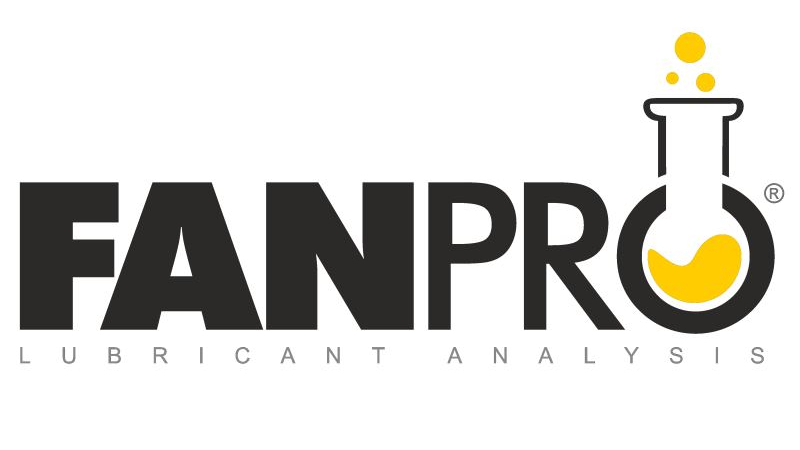
Here's a detailed description of how to implement a routine oil analysis program:
- Establish a Plan: Determine the frequency at which oil samples will be taken from each piece of equipment. The frequency might vary based on factors such as the type of machinery, operating conditions, and manufacturer recommendations.
- Sample Collection: Use proper oil sampling techniques to ensure accurate and representative samples. This involves selecting the appropriate sampling point, using clean and appropriate tools, and following recommended procedures to avoid introducing contaminants.
- Sample Labeling and Documentation: Clearly label each sample with relevant information, including the equipment's identification, date of sampling, and operating conditions. Accurate documentation is essential for tracking changes over time.
- Select a Qualified Laboratory: Choose a reputable and certified laboratory to perform the oil analysis. The laboratory should have experience in analyzing lubricants and providing comprehensive reports
- Sample Analysis: Submit the collected samples to the laboratory for analysis. The laboratory will perform a range of tests, including physical, chemical, and spectroscopic analyses, to assess the lubricant's condition. They will also check for the presence of contaminants such as metal particles, dirt, water, and other debris
- Interpretation of Results: Once the analysis is complete, the laboratory will provide a detailed report outlining the findings. This report might include information about viscosity, wear metals, additive levels, oxidation, and contamination levels. Interpret the results in the context of the equipment's operating conditions and compare them to established benchmarks or previous results.
- Trend Analysis: Over time, compare the results from multiple oil analysis reports to identify trends. Monitoring changes in the lubricant's condition and the presence of contaminants can help you detect abnormalities or potential issues early.
- Take Action: Based on the analysis results and trends, make informed decisions about maintenance activities. This might include scheduling maintenance or repairs, adjusting lubricant change intervals, or implementing corrective actions to address specific issues.
- Record Keeping: Maintain a comprehensive record of all oil analysis reports, including past results and actions taken. This historical data is valuable for tracking equipment performance and making long-term maintenance decisions.
- Continuous Improvement: Regularly review and assess the effectiveness of your oil analysis program. Make adjustments as needed to optimize the program and improve the accuracy of the analysis.
Implementing a routine oil analysis program provides several benefits, including:
- Early Issue Detection: Detecting potential problems early allows you to address them before they lead to significant equipment failures or downtime.
- Optimized Maintenance: Adjust maintenance schedules based on actual equipment condition, leading to more efficient and cost-effective maintenance practices.
- Extended Equipment Life: Regular monitoring and timely interventions can help extend the lifespan of machinery and components.
- Cost Savings: Proactive maintenance reduces the likelihood of expensive breakdowns and unplanned downtime.
By integrating regular oil analysis into your maintenance strategy, you can maximize equipment performance, minimize operational risks, and enhance overall productivity.
2. Proper Storage
Proper storage of lubricants is essential to maintain their quality and prevent contamination, ensuring that they perform optimally when used in machinery and equipment. Here's a more detailed overview of how to store lubricants correctly:
1. Clean Environment: Choose a storage area that is clean and free from dust, dirt, and other contaminants. Ideally, the storage location should be indoors to protect lubricants from environmental elements.
2. Temperature Control: Maintain a consistent and appropriate temperature in the storage area. Extreme temperatures can lead to changes in the lubricant's viscosity, chemical composition, and overall performance. Aim for a temperature range recommended by the lubricant manufacturer.
3. Humidity Management: Prevent moisture from coming into contact with lubricants. High humidity can lead to water condensation inside containers, which can degrade lubricant quality and promote the growth of microorganisms.
4. Sealed Containers: Store lubricants in tightly sealed containers to prevent air, moisture, and contaminants from entering. Ensure that lids and caps are properly secured after each use to maintain the integrity of the lubricant..
5. Original Containers: Whenever possible, keep lubricants in their original, unopened containers. Manufacturer-sealed containers offer the highest level of protection against contamination.
6. Secondary Containment: If you're storing lubricants in bulk or large quantities, consider using secondary containment systems to prevent spills or leaks from contaminating the storage area.
7. Shelving and Racks: Use clean shelving, racks, or pallets to elevate lubricant containers off the floor. This minimizes the risk of contamination from dust, water, and other potential floor-level contaminants.
8. Proper Labeling: Clearly label each container with essential information, including the type of lubricant, date of receipt, and expiration date. Proper labeling helps identify lubricants easily and ensures that older stock is used before newer stock.
9. First-In, First-Out (FIFO): Practice the FIFO principle when using lubricants. This means using the oldest stock first to prevent lubricants from sitting unused for extended periods.
10. Segregation: Store different types of lubricants separately to avoid the risk of cross-contamination. Incompatible lubricants can react with each other and compromise their quality.
11. Regular Inspections: Conduct regular visual inspections of the storage area and containers. Check for signs of leaks, damage, or deterioration that could compromise the quality of the lubricants.
12. Handling Equipment: Use dedicated and clean equipment (funnels, pumps, etc.) when transferring lubricants from containers to machinery. Avoid using equipment that has been used for other fluids to prevent cross-contamination.
13. Training and Education: Train personnel on proper lubricant storage practices to ensure everyone understands the importance of contamination prevention and follows the established guidelines.
14. Spill Response Plan: Develop a spill response plan in case of accidental leaks or spills. Having the necessary tools and materials readily available can help minimize the impact of a spill on lubricant storage.
15. Regular Inventory Management: Keep track of lubricant inventory levels to avoid overstocking and potential deterioration due to prolonged storage.
By following these detailed guidelines for proper lubricant storage, you can ensure that your lubricants remain clean, uncontaminated, and effective for their intended applications, contributing to improved machinery performance and longevity.
3. Filtration systems, desiccant breathers, and seal maintenance
Filtration Systems:
Filtration systems are like diligent gatekeepers stationed along the pathways of your machinery's circulatory system. Equipped with an array of fine sieves and advanced filters, these guardians meticulously sift through the flowing lubricant, capturing and removing particles and contaminants that could otherwise undermine the performance and longevity of your equipment. Just as a watchful sentry ensures only authorized individuals pass through, filtration systems allow only pure, clean lubricant to navigate the intricate channels of your machinery, preventing wear, optimizing efficiency, and upholding the machinery's symphony of seamless operation.
Desiccant Breathers:
Think of desiccant breathers as the moisture-absorbing sorcerers of your machinery's inner sanctum. Positioned at the gates where air meets lubricant, these enchanting guardians employ desiccant material to ward off moisture and humidity like a magical shield. Just as a vigilant protector prevents unwanted guests from entering, desiccant breathers shield your lubricants from the corrosive effects of moisture, preserving their integrity, and safeguarding the intricate dance of your machinery's performance.
Seal maintenance is akin to nurturing the strong, yet delicate bonds that hold your machinery's vital fluids within. Imagine seals as the faithful guardians of a treasure chest, ensuring that nothing escapes and nothing harmful enters. Regular seal inspections and care involve checking for cracks, wear, and signs of fatigue, just as one inspects a fortress for vulnerabilities. By tending to these steadfast sentinels, you prevent leaks, safeguarding the purity of your lubricants and maintaining the machinery's equilibrium, while minimizing the risk of contaminant intrusion or performance disruptions.
4. Oil Sampling Techniques
Five essential points to guide you in performing oil sampling correctly:
Choose the Right Sampling Point: Select representative sampling points that reflect the lubricant's condition within the machinery. Preferably, target zones where oil flow is turbulent, avoiding dead zones where sediment may settle.
Prep Equipment and Tools: Thoroughly clean and dry all sampling equipment, ensuring it's free from any residual contaminants. Use dedicated, clean sampling bottles and tools for each type of lubricant.
Establish Flushing Procedures: Flush the sampling point adequately before collecting the sample. This helps eliminate stagnant oil and ensures the sample is a true representation of the lubricant's current state.
Maintain Sampling Consistency: Follow a consistent sampling frequency and technique over time to track trends accurately. This consistency is crucial for making reliable maintenance decisions based on comparative analysis.
Minimize Contamination Risk: Use clean, lint-free gloves, and take precautions to prevent external contaminants from contacting the sample. Securely cap the sampling bottle immediately after collection to preserve its integrity.
Accurate oil sampling is the cornerstone of effective oil analysis, empowering you to uncover insights into your machinery's health and make informed decisions to optimize maintenance practices.
5. Contamination Control
Contamination control is a critical aspect of maintaining lubricant health and maximizing equipment performance. Implementing various practices and strategies helps prevent cross-contamination during oil handling.
Here are five explanations of contamination control measures to prevent cross-contamination during oil handling:
- Colour-Coded Equipment and Labels: Utilizing a colour-coded system for equipment and labels assigns distinct hues to different lubricant types. This straightforward visual identification ensures that each lubricant is used with the appropriate machinery, minimizing the risk of unintended mixing.
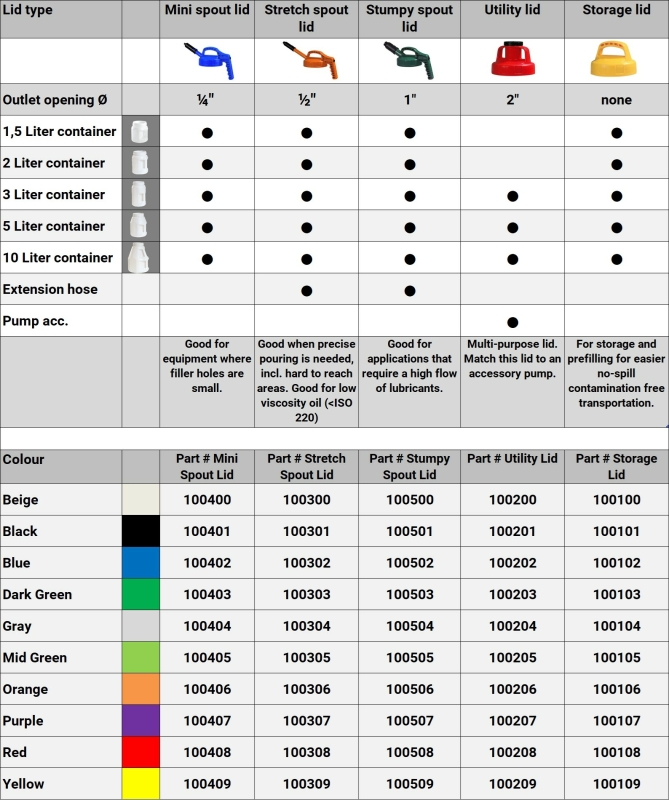
- Dedicated Transfer Containers: Employing dedicated containers for each lubricant type guarantees that oils don't intermingle during the transfer process. These containers act as barriers, ensuring that contaminants or remnants from previous oils don't compromise the purity of the new lubricant.
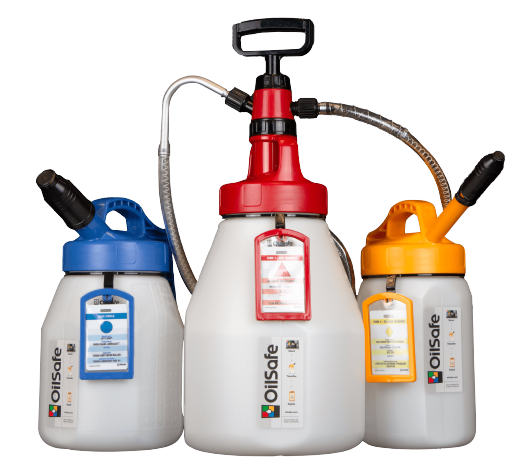
- Proper Handling and Storage Procedures: Adhering to strict protocols for handling and storing lubricants reduces the chances of contamination. This includes using clean equipment, avoiding contact with dirt or debris, and storing lubricants in sealed, clean environments to preserve their integrity.
- Specialized Tools and Equipment: Implementing tools and equipment specifically designated for particular lubricants prevents cross-contamination. Using separate dispensing equipment for each lubricant ensures that no residual traces are left behind, maintaining the purity of the oil.
- Employee Training and Awareness: Educating personnel about the significance of contamination control and providing clear guidelines on proper handling practices is essential. When employees understand the importance of preventing cross-contamination, they are more likely to adhere to established protocols and take proactive measures to maintain lubricant purity.
 In essence, contamination control measures act as a protective shield, preventing the mingling of oils and maintaining the pristine state of lubricants. By incorporating these practices, the risk of cross-contamination is minimized, and the path to optimal lubricant health and equipment performance remains unobstructed.
In essence, contamination control measures act as a protective shield, preventing the mingling of oils and maintaining the pristine state of lubricants. By incorporating these practices, the risk of cross-contamination is minimized, and the path to optimal lubricant health and equipment performance remains unobstructed.
6. Regular oil changes
Regular oil changes are a fundamental maintenance practice to ensure the longevity and optimal performance of machinery. Following manufacturer-recommended oil change intervals helps prevent lubricant degradation, contamination buildup, and potential damage to equipment components.
7. Temperature control
Maintaining proper operating temperatures is essential for ensuring the longevity and effectiveness of lubricating fluids in machinery and equipment. Controlling temperatures helps prevent excessive fluid breakdown, oxidation, and other issues that can compromise lubricant performance.
8. Proper lubricant handling techniques
Proper lubricant handling techniques are a crucial line of defense against the introduction of contaminants that can compromise the performance and longevity of your machinery. Here are essential practices to minimize the risk of contaminant introduction:
Clean Environment: Work in a clean, controlled environment to reduce the likelihood of contaminants entering lubricants. Ensure that workspaces, tools, and equipment are free from dust, dirt, and debris.
Clean Hands and Clothing: Wear clean gloves, and avoid touching lubricated surfaces with bare hands. Avoid clothing that sheds lint, as loose fibers can contaminate lubricants.
Dedicated Equipment: Use dedicated equipment for each lubricant type to prevent cross-contamination. This includes funnels, pumps, and dispensing containers that are exclusively assigned to specific oils.
Sealed Containers: Keep lubricants in tightly sealed containers when not in use to prevent airborne contaminants from settling into the fluid. Open containers only when necessary, and reseal them promptly.
Avoid Direct Pouring: Refrain from pouring lubricants directly from containers into machinery. Instead, use clean dispensing equipment to transfer fluids, reducing the risk of introducing contaminants.

Filtering New Lubricants: Before adding new lubricants to equipment, consider passing them through a clean filter or strainer to ensure any potential contaminants are removed.
Sampling Techniques: Follow proper oil sampling techniques to collect representative samples without introducing additional contaminants. Use clean sampling bottles, and avoid unnecessary contact with external surfaces.
Proper Sealing: After adding or replacing lubricants, ensure that reservoirs and containers are properly sealed to prevent airborne particles or moisture from infiltrating.
Regular Equipment Cleaning: Routinely clean and inspect machinery components, reservoirs, and fill points to remove any accumulated dirt or debris that could contaminate lubricants.
Education and Training: Train personnel on the importance of proper lubricant handling and contamination control. Promote awareness and a culture of cleanliness to encourage consistent adherence to best practices.
Storage Considerations: Store lubricants in designated, clean areas away from potential sources of contamination, such as chemicals or solvents.
By implementing these proper lubricant handling techniques, you create a robust defense against contaminants, ensuring that the integrity of your lubricants remains uncompromised and your machinery performs at its best.
9. Clean environment
Operating machinery in a clean environment is essential for maintaining equipment performance, preventing contamination, and ensuring a longer service life. A clean environment helps minimize the introduction of external contaminants that can negatively impact lubricants and machinery components.
10. Education and training
Education and training for maintenance personnel are essential components of a successful lubrication program. Providing ongoing learning opportunities about the importance of lubricant cleanliness and best practices helps ensure that maintenance teams understand the significance of contamination control and are equipped with the knowledge and skills to implement effective strategies.
The specific strategies may vary depending on the type of machinery, lubricant, and operating conditions. Regular maintenance and a proactive approach to lubricant cleanliness will help ensure optimal performance and equipment longevity.
